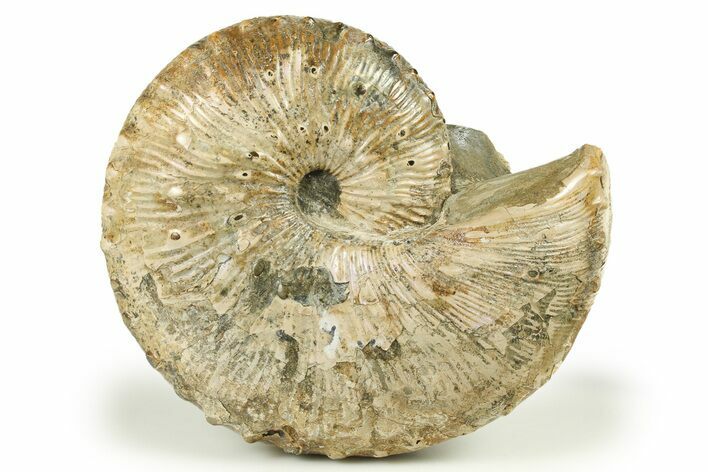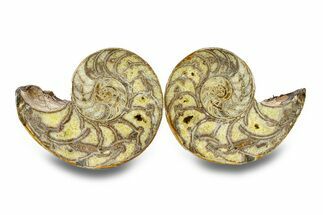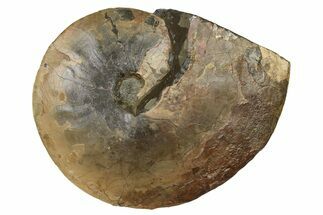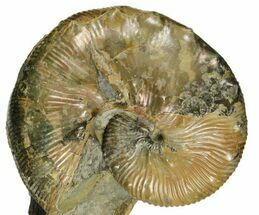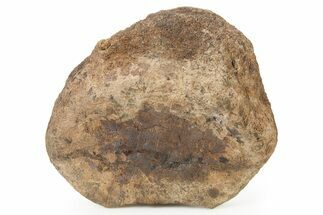5.1" Iridescent Hoploscaphites Ammonite Fossil - South Dakota
This is a bumpy, 5.1" wide Hoploscaphities ammonite specimen collected from the Pierre Shale of South Dakota. The ammonite is excellent condition, considering the difficulty (and time required) to remove it from the rock. The shell exhibits some orange and purple iridescence in spots when rotating it beneath a light source. The rock it was found in has been almost entirely removed with a section of rock remaining along what could be considered the back side of the ammonite.
Comes with an acrylic display stand.
Comes with an acrylic display stand.
Ammonites were predatory cephalopod mollusks that resembled squids with spiral shells. They are more closely related to living octopuses, though their shells resemble that of nautilus species. True ammonites appeared in the fossil record about 240 million years ago during the Triassic Period. The last lineages disappeared 65 million years ago at the end of the Cretaceous.
These 70 million year old ammonites lived when South Dakota was a shallow inland sea. They were found preserved in concretions when split open. They then had to be hand-prepared to remove the hard rock surrounding them from their shells, a very time consuming task.
SPECIES
Hoploscaphities sp.
AGE
LOCATION
South Dakota
FORMATION
Pierre Shale
SIZE
Ammonite: 5.1" wide, Entire specimen: 3.4 x 3"
CATEGORY
SUB CATEGORY
ITEM
#270091
We guarantee the authenticity of all of our
specimens. Read more about our
Authenticity Guarantee.
specimens. Read more about our
Authenticity Guarantee.
 Reviews
Reviews

